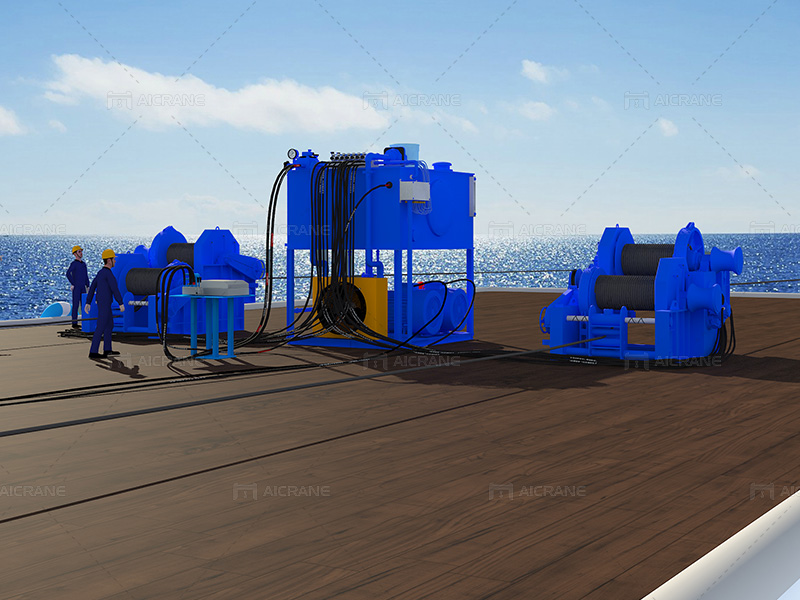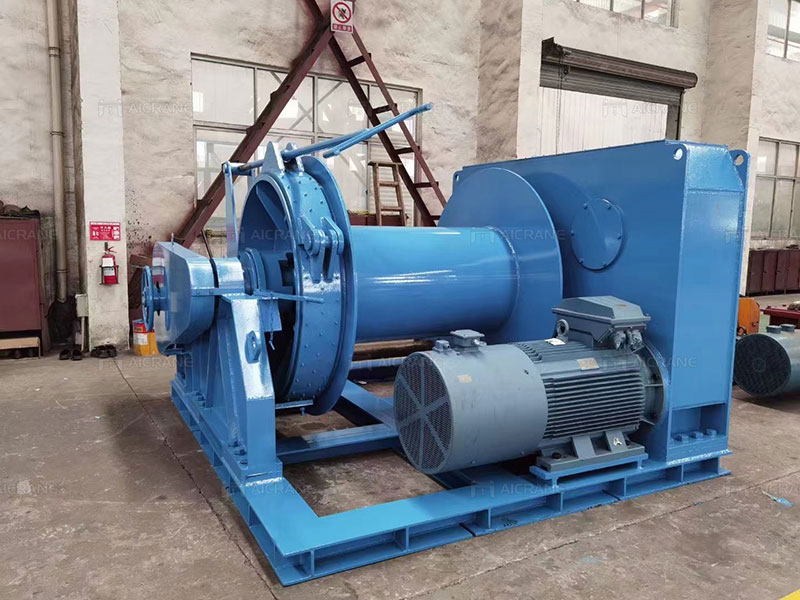Mooring winches are vital for securing vessels at ports and offshore facilities, ensuring ships remain stable and safely anchored. However, operating mooring winches involves significant risks if not handled correctly. Implementing and adhering to strict safety protocols is essential to prevent accidents, injuries, and equipment damage. This article outlines the key safety protocols for operating mooring winches on commercial ships.
Comprehensive Training and Certification
Operator Training
Basic Training: All operators must undergo basic training that covers the fundamentals of mooring winch operations, including understanding the equipment, its components, and its functions.
Advanced Training: Advanced training should include hands-on experience with the specific types of winches on the vessel, including electric mooring winch, hydraulic mooring winch and diesel winch, emergency procedures, and troubleshooting common issues.

Certification
Certifications: Operators should obtain relevant certifications from recognized maritime authorities, ensuring they meet industry standards and are qualified to operate mooring winches.
Regular Refresher Courses: Regular refresher courses are essential to keep operators updated on the latest safety protocols, technology advancements, and operational techniques.
Pre-Operation Inspections
Equipment Check
Visual Inspection: Conduct a thorough visual inspection of the winch, cables, and related equipment for any signs of wear, corrosion, or damage.
Functionality Test: Test the winch’s functionality without load to ensure it operates smoothly. Check for unusual noises, vibrations, or other irregularities.
Safety Gear
Personal Protective Equipment (PPE): Ensure all operators and crew members involved in the mooring process wear appropriate PPE, including helmets, gloves, safety boots, and high-visibility clothing.
Safety Barriers and Signage: Set up safety barriers and signage to keep unauthorized personnel away from the mooring area during operations.
Safe Operating Procedures
Communication
Clear Communication: Establish clear communication protocols among the crew. Use hand signals, radios, or other communication devices to ensure everyone is aware of their roles and the operation’s progress.
Designated Communication Officer: Appoint a designated communication officer to coordinate the operation and ensure all instructions are followed correctly.
Load Management
Avoid Overloading: Never exceed the winch’s rated capacity. Overloading can lead to equipment failure and accidents.
Load Distribution: Ensure the load is evenly distributed to prevent undue stress on the mooring winch and cables.
Operational Speed
Controlled Speed: Operate the winch at a controlled speed, especially when the vessel is approaching the dock or during high-tension situations.
Gradual Adjustments: Make gradual adjustments to the winch speed and tension to prevent sudden movements that could cause injuries or equipment damage.
Emergency Procedures
Emergency Stop Mechanism: Familiarize all operators with the winch’s emergency stop mechanism and ensure it is functioning correctly.
Emergency Drills: Conduct regular emergency drills to practice and reinforce the procedures for dealing with winch failures, cable breaks, or other emergencies.

Maintenance and Inspections
Routine Maintenance
Scheduled Maintenance: Follow a regular maintenance schedule as per the manufacturer’s recommendations. This includes lubricating moving parts, checking hydraulic or electric systems, and replacing worn components.
Record Keeping: Maintain detailed records of all inspections, maintenance activities, and repairs to track the winch’s condition and performance over time.
Inspections
Regular Inspections: Conduct regular inspections of the winch and associated equipment, focusing on the condition of cables, drums, brakes, and control systems.
Pre- and Post-Operation Inspections: Inspect the winch both electric mooring winch and hydraulic mooring winch before and after each operation to identify and address any potential issues promptly.
Environmental and External Considerations
Weather Conditions
Weather Assessment: Assess weather conditions before beginning mooring operations. High winds, rough seas, and poor visibility can significantly increase the risks involved.
Postpone Operations: If conditions are deemed unsafe, postpone mooring operations until the weather improves.
Surrounding Environment
Area Clearance: Ensure the mooring area is clear of obstacles and unauthorized personnel. This includes checking the water for floating debris that could interfere with the mooring lines.
Awareness of Nearby Vessels: Maintain awareness of nearby vessels and port activities to avoid collisions or other incidents during mooring operations.
Continuous Improvement and Safety Culture
Safety Audits
Regular Audits: Conduct regular safety audits to review procedures, equipment condition, and operator performance.
Feedback Mechanism: Implement a feedback mechanism for crew members to report safety concerns or suggest improvements.
Safety Culture
Promote Safety Awareness: Foster a safety-first culture on board by promoting awareness, encouraging adherence to safety protocols, and recognizing safe behavior.
Safety Meetings: Hold regular safety meetings to discuss protocols, review incidents, and update the crew on any changes to procedures or winch equipment.
Conclusion
Operating mooring winches on commercial ships involves significant risks, but these can be effectively managed through comprehensive training, rigorous inspections, clear communication, and strict adherence to safety protocols. By prioritizing safety and fostering a culture of continuous improvement, maritime operations can achieve greater efficiency, reduce accidents, and protect the well-being of crew members. Ensuring these safety protocols are meticulously followed will contribute to smoother, safer mooring operations and a more secure maritime environment.